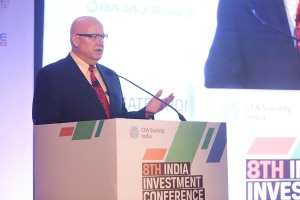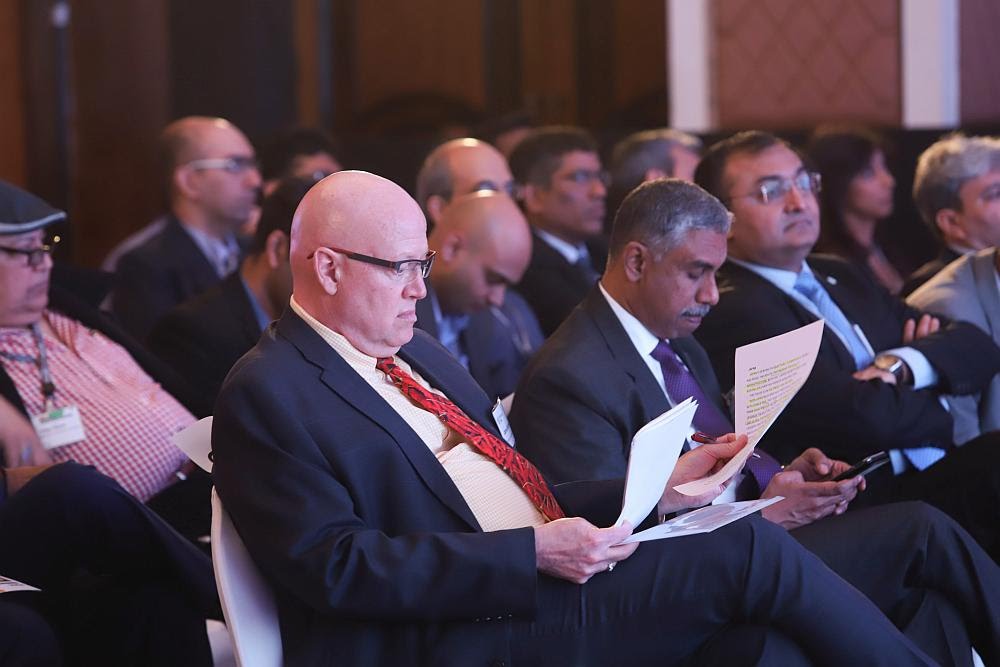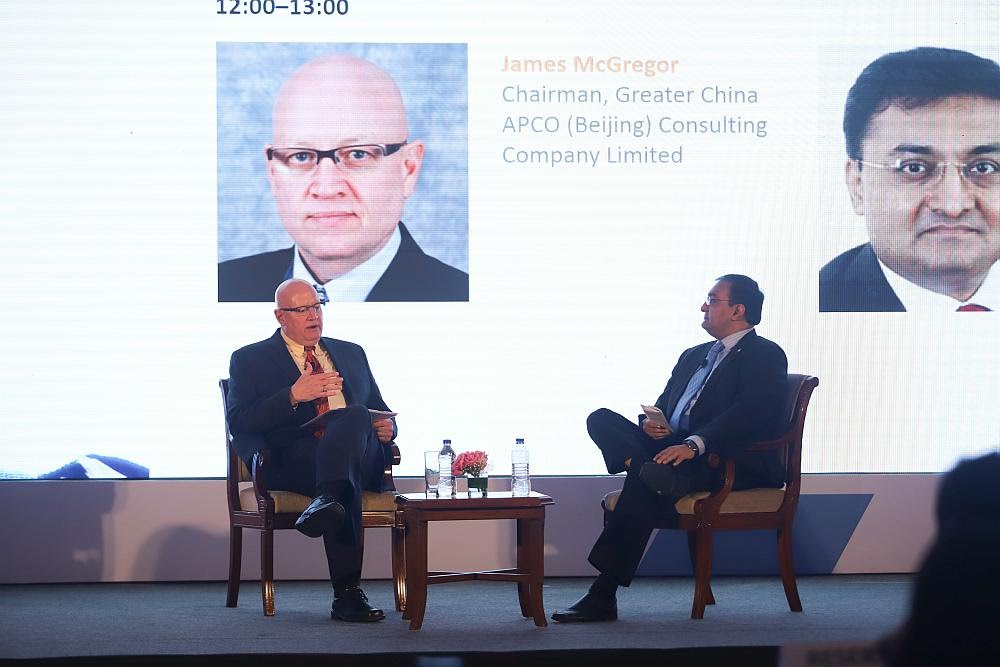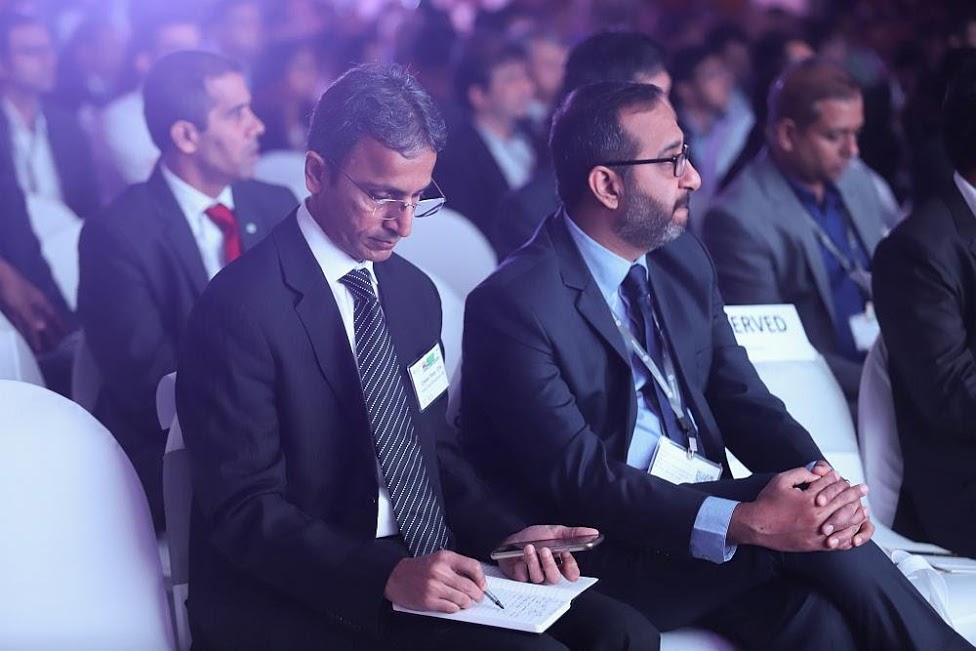- January 16, 2018
- Posted by:
- Category:BLOG, Events, India Investment Conference, Mumbai
 Speaker: James McGregor, Chairman, Greater China, APCO (Beijing) Consulting Company Ltd.
Speaker: James McGregor, Chairman, Greater China, APCO (Beijing) Consulting Company Ltd.
Moderator: Jayesh Gandhi, CFA, President, IAIP
Contributed by: Chetan Shah, CFA, Secretary, IAIP
There are stark differences in the boards of Chinese and US companies. According to James Mc Gregor, the Chinese boards talk more about opportunities and are ambitious. While those at US talk more about risks and downside. The same things echo at the national level. China under Xi Jinping wants to overtake other nations at the world stage, take a path of its own, away from those prescribed by the west, and propagate its own development model across the developing world. Through the Belt and Road Initiative, it is offering funds for infrastructure projects at commercial rates. It has taken Hambantota port in Sri Lanka at a strategic southern location on a 99 year lease. In Kazakhstan it has committed to 51 projects around Khorgos International Centre for Boundary Cooperation (a dry port and free trade zone) that opens the door to the West. In Pakistan it has committed large sums to build roads, rails, industries and stabilize the economy. In the last 20 years it has done similar things on the African continent building infrastructure for natural resources. It has convinced leaders there that the Chinese model of development could be easily adopted by them. It has invested into education and offered scholarship to students as a result of which more Africans go to Chinese universities than to the US. While countries joining OBOR will improve their infrastructure, it will help utilize China’s own huge capacities in industries like cement and steel. In Asia China controls around 2/3rd of the South China Sea having built thousands of acres of land and islands. In Malaysia it has 20% ethnic Chinese to cater to. The generals in Thailand prefer closer relationships with China. China is working on a high-speed train from Kunming to Singapore involving 154 bridges, 50,000 workers and around $7bn investment. Chinese leaders have spelled out the “Made in China 2025” vision which includes attaining global leadership in areas like artificial intelligence, cloud computing, bio-pharmaceuticals, new materials etc.
zone) that opens the door to the West. In Pakistan it has committed large sums to build roads, rails, industries and stabilize the economy. In the last 20 years it has done similar things on the African continent building infrastructure for natural resources. It has convinced leaders there that the Chinese model of development could be easily adopted by them. It has invested into education and offered scholarship to students as a result of which more Africans go to Chinese universities than to the US. While countries joining OBOR will improve their infrastructure, it will help utilize China’s own huge capacities in industries like cement and steel. In Asia China controls around 2/3rd of the South China Sea having built thousands of acres of land and islands. In Malaysia it has 20% ethnic Chinese to cater to. The generals in Thailand prefer closer relationships with China. China is working on a high-speed train from Kunming to Singapore involving 154 bridges, 50,000 workers and around $7bn investment. Chinese leaders have spelled out the “Made in China 2025” vision which includes attaining global leadership in areas like artificial intelligence, cloud computing, bio-pharmaceuticals, new materials etc.
There is a shift of power from the collective opinion system, with 9 member standing committee, in the past to single person in the party. This has been possible due to Xi Jinping’s own background, dissatisfaction over excessive corruption in the past, debt fueled expansion, ageing population and middle-income trap for the nation. Besides there is spin of story with hostile forces surrounding China, greedy MNCs exploiting its people, Japan stealing islands and so on.
US on the other hand seems to be in undo phase politically. In order to “Make America Great Again” and bring in more jobs, it is pulling out of blocks like TPP (Trans Pacific Partnership). TPP forms nearly 30% of the Global GDP. Little does the US realize that China will gain out of such moves? Of the $3.5T of cumulative trade deficit with China over last few years, nearly 50% of imports come from American companies with 450 factories in China. James added the Chinese proverb “fu bu guo san dai” which means Wealth does not pass three generations. In this case the USA is seeing third generation post World War 2.
At this juncture India has a good opportunity to tap into. Though the international investment in China is huge, investors have currently become exhausted with China and are looking out for similar destinations globally. India emerges as a good continent “rising from the ocean”. There is a huge opportunity for India. It depends how quickly it opens up to foreign investments.
in China is huge, investors have currently become exhausted with China and are looking out for similar destinations globally. India emerges as a good continent “rising from the ocean”. There is a huge opportunity for India. It depends how quickly it opens up to foreign investments.
- CGS







